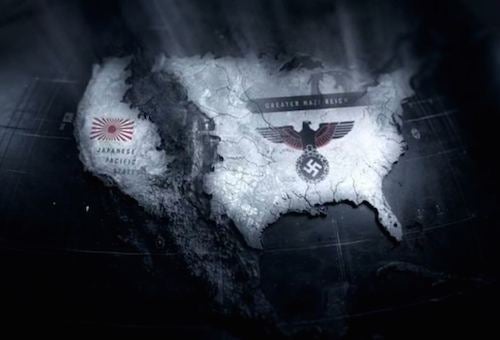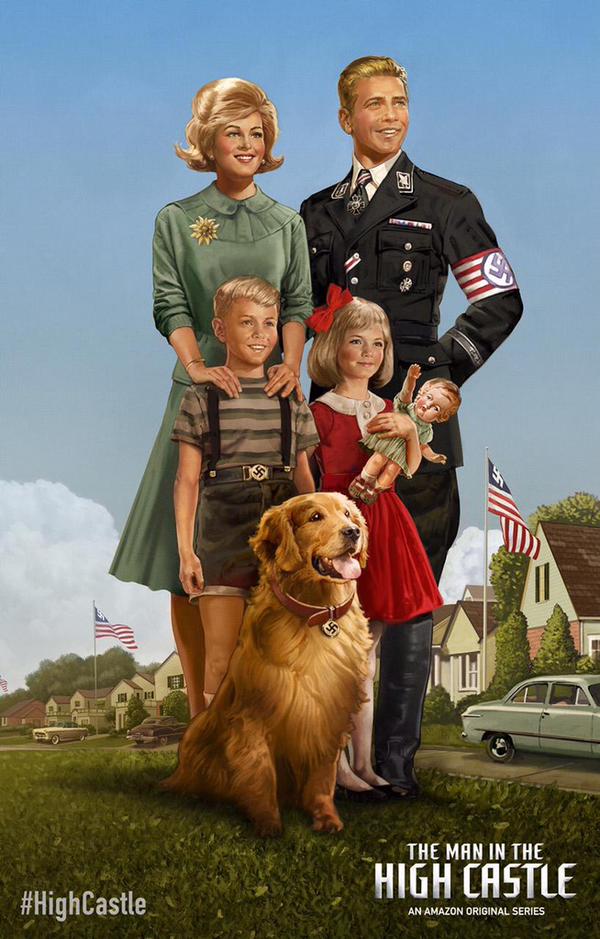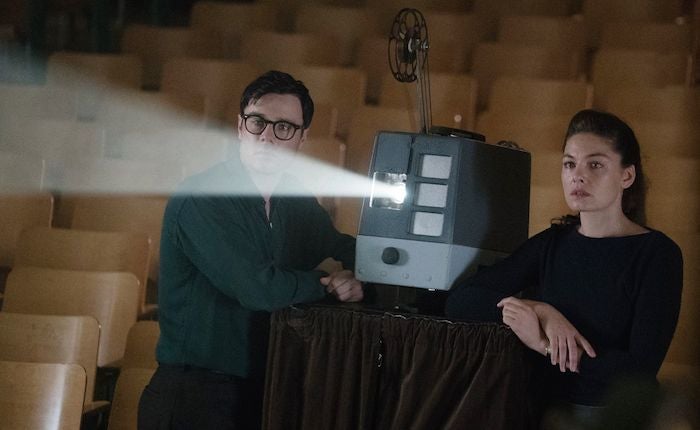
Season 2 of The Man in the High Castle, the Amazon Studios-produced series that has just been renewed for a third season, begins with what looks like ordinary American teenagers in 1962 walking to school in a New York suburb, except that some of the kids are dressed in Hitler Youth uniforms and the school is named after Fritz Kuhn (the head of the pro-Nazi German-American Bund in New York in 1939). Once in class, the students stand up to pledge allegiance, hands over their hearts, just as I remember we had to do in school in those years, but they are swearing their lives to Adolf Hitler and the Nazi Reich of America. It is one of those moments, of which there are many in this series, where you think how seamlessly Americans could accept a fascist dictatorship, as long as it is couched in the patriotism of making America great.
Having written my dissertation on anti-Nazi films made in Hollywood during World War II, I have a continuing interest in the cinematic portrayal of the Nazis and the Holocaust, so I had to start streaming. Based on Philip K. Dick’s novel of the same name, The Man in the High Castle visualizes an alternative reality, in which the Japanese and the Germans have won World War II and divided the spoils, with a lawless neutral zone in the Rocky Mountains between the Greater Nazi Reich and the Japanese Pacific States. The outward signs  of a brutal dictatorship are everywhere: in the West the Japanese state security apparatus tortures and kills perceived enemies without judicial due process. In the East, SS Obergruppenführer John Smith, a true-blooded American, ruthlessly destroys the resistance movement. And yet, Smith and his family also appear to be ordinary middle class suburbanites with whom we can identify. Thus, when Smith finds out that his son has a genetic defect that marks him for euthanasia, we not only sympathize with his internal conflict, but also can begin to understand what many Germans actually experienced. In this sense, the series is also a history lesson.
of a brutal dictatorship are everywhere: in the West the Japanese state security apparatus tortures and kills perceived enemies without judicial due process. In the East, SS Obergruppenführer John Smith, a true-blooded American, ruthlessly destroys the resistance movement. And yet, Smith and his family also appear to be ordinary middle class suburbanites with whom we can identify. Thus, when Smith finds out that his son has a genetic defect that marks him for euthanasia, we not only sympathize with his internal conflict, but also can begin to understand what many Germans actually experienced. In this sense, the series is also a history lesson.
The portrayal of the Japanese is a different matter altogether, as it was during World War II when American film propaganda used racialized stereotypes to visualize the Japanese enemy as other, while the Nazis were seen as WASPs with political correctness issues. In The Man in the High Castle, the Japanese are consistently shown to be unknowable to white people, because of their ethnicity and cultural difference. Even the sympathetic characters, like the Japanese Trade Minister Tagawa, are steeped in mysticism, repeatedly shown throwing down the yarrow stalks of I Ching in order to divine the future. There is of course an internal logic to the Japanese, codified in Bushido, but it is a hallmark of the show that even the American resistance is neither morally pure, nor without blood on its hands.
Essentially, the first season revolves around the hunt for and retrieval of a group of ratty 16mm film reels, collected (or disseminated?) by the man in the high castle, that are coveted by Adolf Hitler, the Japanese, the yakuza, and the American resistance movement. At first, the reels, which appeared to be authentic newsreels from World War II, seemed to be nothing more than a McGuffin to set the plot in motion, but by the end of the first season, it became clear that they were much more than that: like Tagawa’s I Ching, they might also predict the future.

I don’t know how this will all play out through the remainder of season 2 and season 3, but I’m fascinated by the self-reflexivity the series engenders. Viewing a Nazi Reich on American soil in 1962 forces the viewer to continually compare this narrative with our actual present day reality, realizing how plausible such an alt-reality might be. But the 16mm newsreels, which are documents of our reality, become their alt-reality. When the lead characters see images of an atomic explosion, we recognize the burnt shadows on the walls as images from Hiroshima, and American atomic test footage from Los Alamos. Each of these “realities” is constructed through film images and editing. The point being that political systems stand and fall on illusions, which are as easily to manipulate as a film reel. It is a lesson well worth learning for the next four years.
< Back to Archival Spaces blog






 Mobile Navigation
Mobile Navigation

